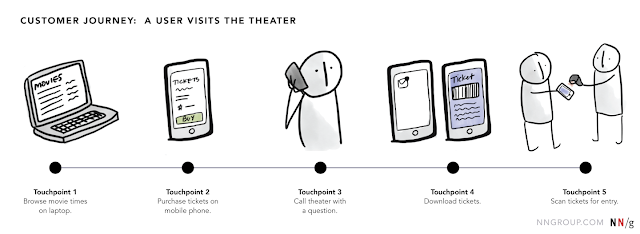This article was originally published on Linked In.
Usually, I do not use multiple exclamatory marks to express emotions. Today is an exception!
Just when I was wondering what should be the first blog post for 2019, I realized I completed 10 years in blogging. I created the blog 'Curious Tester' on 6th February 2009. 10 years later, I have written more than 250 articles on my blog, plus another 50+ external publications on corporate blogs across the world. I am losing count! What a journey it has been! I thank all the readers who have encouraged my writing for this long. BUT... today is special for another reason - where my writing journey led me to...
I am super thrilled to share I am a Google Developers Expert in Interaction Design. I have been active in the Google Bangalore Community for a couple years although sporadically. I never expected that one of the evangelists who followed my work, would recommend my name to this program. After clearing five rounds, here I am, recognized for my work in Interaction Design.
In the past five years or so, Interaction Design has become the soul of my work. Thanks to the strong foundation created by Donald M. Norman, David Rose, Dan Saffer, Golden Krishna, Luke Wroblewski, Alan M. Cooper and Steve Krug, I started my Usability journey in 2009 at a startup that was building remote automation projects. While usability was not a quality criteria, I learned *something* was wrong with *some* features and started to read Steve Krug's book, 'Don't Make Me Think'. This led me to talk to few users (B2B though), which in turn led to finding usability problems and thus began my interesting journey in UX (just usability at the time).
This new interest in usability continued in my next startup where my mentor Pradeep Soundararajan noticed a spark and nurtured it. It was in this role that I ran multiple usability and user research projects for many Indian and US based startups. The next role took me to setting up a dedicated UX Competency Center from scratch, where I executed and led multiple projects leading to happy customers. Here I was, learning about usability, user research and user experience on weekends and implementing my learnings at work on weekdays. I was fortunate to attend the first design course led my Donald Norman (was it Udacity or Udemy, I don't remember), followed with reading many books by UX giants I mentioned above. Last year, I also completed my specialization course in Interaction Design (University of California San Diego). Again, I was fortunate, as this course was led by Scott Klemmer, a student of Donald M. Norman. An year later, this is where I stand. I cannot believe most of what has happened since the time I started a blog back in February 2009. But I do believe in this:
"When you want something, all the universe conspires in helping you to achieve it."
Paulo Coelho
Many people make an impact on our lives. My heartfelt thanks to my mentor Pradeep Soundararajan for inspiring me ever since I wrote my first blog and for being a major part of my learning journey. Thank You Pradeep, for gifting your precious time to me!
Many organizations make an impact too. All my employers played a great role in my work. Amadeus, my current employer has been very supportive of my work. I am amazed every time I think about how the organization has grown from 2 people to 2000+ in roughly 6 years and continues to nurture great talent in the technology space. This is possible thanks to the fabulous leadership team and the talented people working here. I am happy to be a small part of it, shaping the future of travel for future generations to come. Thank You, Amadeus. You humble me!
My super lovely team at Amadeus created this lovely poster for me. I am extremely grateful for the amazing support and love I have received so far, throughout my User Experience journey.
"If I have seen further than others, it is by standing upon the shoulders of giants."
Isaac Newton
A Big Thank You from to each one of you who has touched my work and my life in some way.
Here's Wishing You All a Great 2019!












